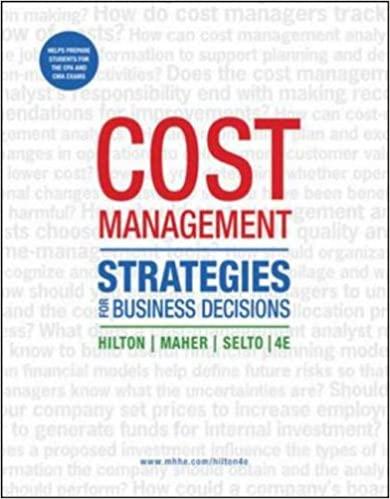Sequoia Company developed its overhead application rate from the annual budget, which is based on an expected
Question:
Sequoia Company developed its overhead application rate from the annual budget, which is based on an expected total output of 720,000 units requiring 3,600,000 machine hours. The company is able to schedule production uniformly throughout the year.
A total of 66,000 units requiring 315,000 machine hours were produced during May. Actual overhead costs for May amounted to $375,000. The actual costs, as compared to the annual budget and to one-twelfth of the annual budget, are as follows:
SEQUOIA COMPANY Annual Budget Per Actual Total Per Machine Monthly Costs Amount Unit Hour Budget for May Variable overhead:
Indireeumeateniall, vas creeesetr t ae $1,224,000 $1.70 $ .34 $102,000 $109,800 linglite Ctilalbo teeeesentace uetce oemer ce 900,000 225 c25) 75,000 76,200 Fixed overhead:
SUDESIVISO N eerent cee aseneeenngsth etaere r 648,000 .90 18 54,000 50,100 UW)i ets resrecenacaanao soet boatteres rne e re 540,000 HS AS 45,000 54,400 DO PKECIAUOR citar theca ct sgecberreahreeee e 1,008,000 1.40 .28 84,000 84,500 Totals gta gneno a Reeubd ante $4,320,000 $6.00 $1.20 $360,000 $375,000 Required
a. Prepare a schedule showing the following amounts for Sequoia Company for May.
(1) Applied overhead costs.
(2) Variable-overhead spending variance.
(3) Fixed-overhead budget variance.
(4) Variable-overhead efficiency variance.
(5) Fixed-overhead volume variance.
Where appropriate, be sure to indicate whether each variance is favorable or unfavorable.
b. Draw a graph similar to Exhibit 17—7 to depict the variable-overhead variances.
c. Why does your graph differ from Exhibit 17—7 other than the fact that the numbers differ?
Step by Step Answer:

Cost Management Strategies For Business Decisions
ISBN: 12
4th Edition
Authors: Ronald Hilton, Michael Maher, Frank Selto




